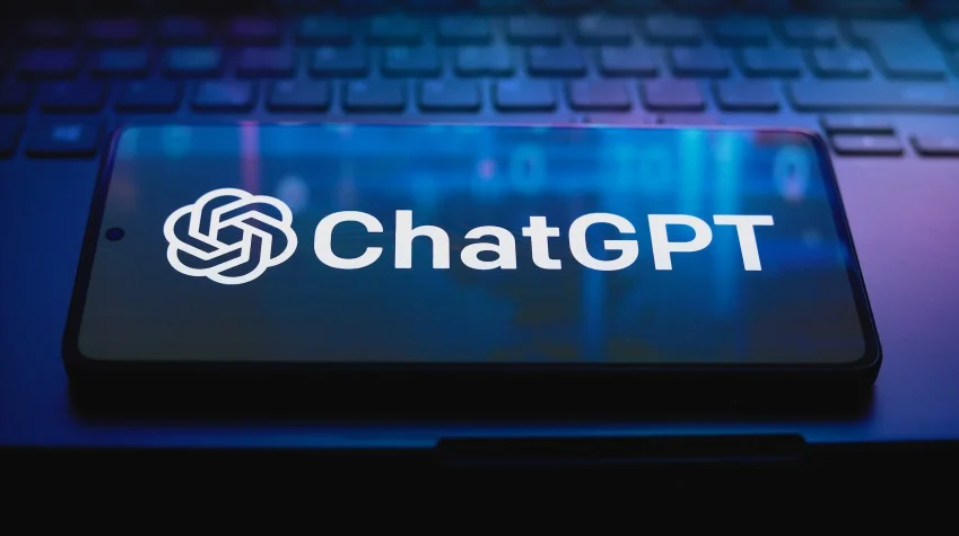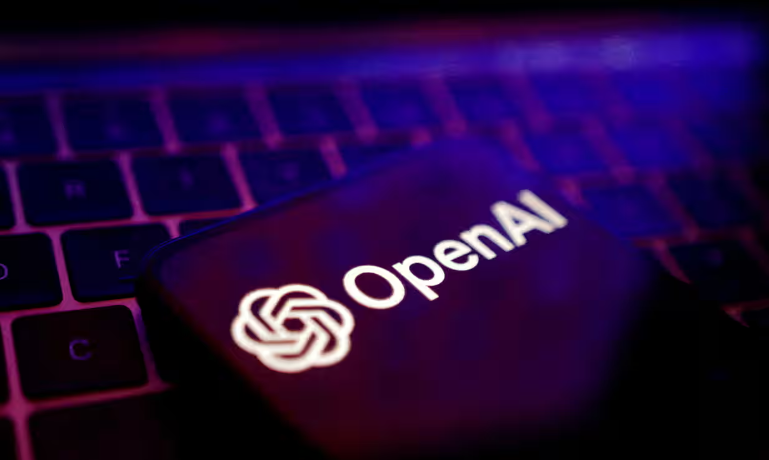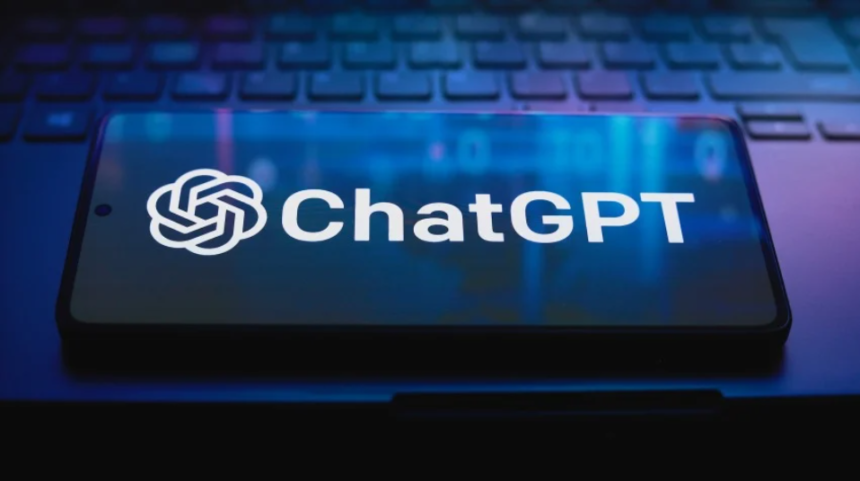How an Iranian Group Used ChatGPT to Attempt to Influence the U.S. Presidential Election:-
How an Iranian Group Used ChatGPT in an age where artificial intelligence (AI) is increasingly becoming an integral part of our daily lives, its potential misuse in shaping public opinion has raised significant concerns. One such case involves an Iranian group that allegedly used ChatGPT, an AI language model developed by OpenAI, in an attempt to influence the U.S. presidential election. This incident has sparked a global debate about the ethical implications of AI, the vulnerabilities of democratic processes, and the measures that need to be taken to prevent the misuse of advanced technologies.
The Rise of AI in Political Campaigns
The use of AI in political campaigns is not a new phenomenon. Over the past decade, AI has been employed to analyze voter data, predict election outcomes, and craft personalized campaign messages. However, the involvement of AI in attempts to manipulate elections marks a disturbing new chapter. The case of the Iranian group using ChatGPT represents one of the first known instances where AI was allegedly deployed to interfere directly in the political process of a sovereign nation.
AI’s Role in Misinformation Campaigns
Artificial intelligence, particularly large language models like ChatGPT, has the capability to generate human-like text, making it an attractive tool for those looking to spread misinformation or influence public opinion covertly. By producing content that appears credible, AI can be used to craft persuasive narratives, spread fake news, How an Iranian Group Used ChatGPT and even impersonate individuals or groups online.
The Iranian group in question reportedly exploited these capabilities to disseminate misleading information, create divisive content, and manipulate online discourse related to the U.S. presidential election. The group’s strategy included generating politically charged posts, comments, and articles that were then distributed across various social media platforms and websites frequented by American voters.  for more information click on this link
for more information click on this link
Understanding ChatGPT’s Functionality
ChatGPT, like other AI language models, operates by analyzing vast amounts of text data and using statistical patterns to generate coherent and contextually appropriate responses. While the model itself is neutral and does not have inherent political biases, its outputs can be shaped by the data it is trained on and the prompts it receives. In this case, How an Iranian Group Used ChatGPT the Iranian group allegedly fed the AI specific prompts designed to generate content that aligned with their agenda.
The model’s ability to produce seemingly authoritative content on a wide range of topics made it an ideal tool for this operation. By leveraging ChatGPT’s capabilities, the group could generate large volumes of text that appeared authentic and credible, How an Iranian Group Used ChatGPT making it difficult for the average reader to distinguish between genuine information and AI-generated propaganda.
The Methods Employed by the Iranian Group
Targeting Voter Segments
The Iranian group reportedly used AI-generated content to target specific voter segments within the United States. By analyzing public sentiment and demographic data, the group could identify key voter groups that were more susceptible to influence. These included undecided voters, marginalized communities, How an Iranian Group Used ChatGPT and individuals with strong political views but limited access to reliable information.
Once these groups were identified, the AI-generated content was tailored to resonate with their beliefs and concerns. For example, articles and social media posts that exploited fears about economic instability, immigration, How an Iranian Group Used ChatGPT or national security were crafted to sway voters toward a particular candidate or to sow discord within these communities.
Spreading Disinformation
Disinformation, or the deliberate spread of false information with the intent to deceive, was a central tactic in the Iranian group’s operation. By using ChatGPT to generate misleading headlines, fabricated news stories, and biased commentary, How an Iranian Group Used ChatGPT the group sought to create confusion and undermine trust in the electoral process.
One of the key advantages of using AI for disinformation is the ability to generate content rapidly and at scale. Unlike human operators, who are limited by time and resources, AI can produce thousands of pieces of content in a matter of minutes. This allowed the Iranian group to flood social media platforms with false information, How an Iranian Group Used ChatGPT making it difficult for fact-checkers and authorities to keep up.
Impersonating Influential Voices
Another tactic employed by the Iranian group involved using AI to impersonate influential voices in the political sphere. By mimicking the language and style of prominent political commentators, journalists, and even politicians, the group could create content that appeared to be legitimate. This content was then distributed through fake accounts or websites designed to look like credible news sources.
The ability of AI to generate text that closely resembles human speech made this tactic particularly effective. Readers who encountered these impersonated voices were more likely to accept the information as true, especially if it aligned with their preexisting beliefs or came from a source they trusted.
Exploiting Social Media Algorithms
Social media platforms use algorithms to determine which content is shown to users, often prioritizing posts that generate high levels of engagement. The Iranian group reportedly exploited these algorithms by creating content that was designed to provoke strong emotional reactions, such as anger or fear. This type of content is more likely to be shared, How an Iranian Group Used ChatGPT liked, and commented on, increasing its visibility and reach.
By generating content that was both emotionally charged and aligned with the preferences of specific voter groups, the group was able to manipulate social media algorithms to amplify their disinformation campaign. This not only increased the impact of their efforts but also made it more challenging for platforms to detect and remove the misleading content.
The Response from U.S. Authorities
Investigation and Attribution
The discovery of the Iranian group’s activities prompted an immediate response from U.S. intelligence agencies and cybersecurity experts. A thorough investigation was launched to determine the extent of the operation, identify those responsible, How an Iranian Group Used ChatGPT and assess the potential impact on the election.
Attribution, or the process of identifying the source of a cyber operation, is notoriously difficult, especially when AI is involved. However, through a combination of digital forensics, intelligence gathering, and analysis of online activity, U.S. authorities were able to trace the operation back to a group with known ties to the Iranian government. While the exact details of the investigation remain classified, it is believed that the group received support from state actors, How an Iranian Group Used ChatGPT further complicating the geopolitical implications of the case.
Measures Taken to Counteract the Influence
In response to the Iranian group’s actions, U.S. authorities implemented a series of measures designed to mitigate the influence of AI-generated disinformation. These included:
- Increased Monitoring and Detection: Social media platforms and cybersecurity firms were urged to enhance their monitoring systems to detect and flag AI-generated content. This involved developing algorithms capable of identifying patterns consistent with AI-produced text, How an Iranian Group Used ChatGPT as well as collaborating with AI experts to refine detection methods.
- Public Awareness Campaigns: Government agencies and non-profit organizations launched public awareness campaigns to educate voters about the dangers of disinformation and the potential misuse of AI. These campaigns emphasized the importance of critical thinking, media literacy, How an Iranian Group Used ChatGPT and verifying the sources of information before sharing it online.
- Collaboration with Tech Companies: U.S. authorities worked closely with tech companies to address the threat of AI-generated disinformation. This included sharing intelligence about the Iranian group’s tactics, How an Iranian Group Used ChatGPT developing tools to identify and remove fake accounts, and improving transparency around the origins of online content.
- Legal and Diplomatic Actions: In addition to technological measures, the U.S. government considered legal and diplomatic actions against those involved in the operation. This included imposing sanctions on individuals and entities linked to the group, as well as engaging in diplomatic discussions with the Iranian government to address the issue.
The Ethical Implications of AI in Politics
The Responsibility of AI Developers
The incident involving the Iranian group highlights the ethical dilemmas faced by AI developers. While AI technology has the potential to bring about positive change in many areas, How an Iranian Group Used ChatGPT it also carries significant risks, particularly when used to manipulate public opinion or undermine democratic processes.
AI developers must grapple with the question of how to prevent their creations from being misused. This involves implementing safeguards to limit the generation of harmful content, providing clear guidelines for ethical use, How an Iranian Group Used ChatGPT and actively monitoring how their technology is being deployed in the real world.
Balancing Innovation with Regulation
As AI continues to evolve, there is a growing need for regulation to ensure that its use is aligned with ethical standards and the public good. However, striking the right balance between encouraging innovation and imposing necessary restrictions is a complex challenge.
On one hand, overly stringent regulations could stifle technological advancement and limit the potential benefits of AI. On the other hand, a lack of regulation could lead to widespread misuse, as demonstrated by the Iranian group’s activities. Policymakers, tech companies, How an Iranian Group Used ChatGPT and AI experts must work together to develop a framework that promotes responsible AI development while protecting against its potential harms.  for more information click on this link
for more information click on this link
The Role of the Public in Safeguarding Democracy
Ultimately, the resilience of democratic processes in the face of AI-driven manipulation depends on an informed and vigilant public. Voters must be equipped with the tools and knowledge to critically evaluate the information they encounter online and to recognize the signs of disinformation campaigns.
Educational initiatives focused on media literacy, critical thinking, and digital citizenship are essential in this regard. By fostering a culture of skepticism and encouraging individuals to question the sources and motivations behind the content they consume, How an Iranian Group Used ChatGPT societies can build a more robust defense against AI-driven attempts to influence elections.
Conclusion
The case of the Iranian group using ChatGPT to attempt to influence the U.S. presidential election serves as a stark reminder of the potential dangers posed by AI technology when it falls into the wrong hands. While AI holds immense promise for improving many aspects of our lives, its misuse in political contexts highlights the need for vigilance, How an Iranian Group Used ChatGPT regulation, and ethical considerations.
As AI continues to advance, it is crucial that we remain aware of its potential to be used both for good and for harm. By taking proactive steps to prevent the misuse of AI in elections and other critical areas, we can help ensure that this powerful technology is harnessed in ways that benefit society as a whole, rather than undermining the very foundations of democracy. ALSO READ:- Allahabad High Court Orders Live Streaming Inside Banke Bihari Temple During Janmashtami 2024






мостбет мобильная версия скачать мостбет мобильная версия скачать .
1 вин 1 вин .
мостбет зеркало https://www.mostbet6006.ru .
1 вин официальный сайт http://familyclub.borda.ru/?1-6-0-00002163-000-0-0-1743051813 .
1win.pro http://1win6001.ru .
1 win официальный сайт http://familyclub.borda.ru/?1-6-0-00002163-000-0-0-1743051813/ .
скачать mostbet на телефон скачать mostbet на телефон .
1-win familyclub.borda.ru/?1-6-0-00002163-000-0-0-1743051813 .
1win win 1win win .
1wi http://1win6001.ru .
1win. balashiha.myqip.ru/?1-12-0-00000437-000-0-0-1743258848 .
1 win официальный сайт вход https://alfatraders.borda.ru/?1-0-0-00004932-000-0-0-1743258210 .
1win бк https://alfatraders.borda.ru/?1-0-0-00004932-000-0-0-1743258210 .
1win вход на сайт https://balashiha.myqip.ru/?1-12-0-00000437-000-0-0-1743258848/ .
1 win.com 1 win.com .
бк 1win alfatraders.borda.ru/?1-0-0-00004932-000-0-0-1743258210 .
1win кейсы https://1win6049.ru .
1win онлайн 1win онлайн .
зайти в 1вин http://1win6049.ru .
1 вин официальный 1 вин официальный .
1вин alfatraders.borda.ru/?1-0-0-00004932-000-0-0-1743258210 .
служба поддержки мостбет номер телефона http://svstrazh.forum24.ru/?1-18-0-00000136-000-0-0-1743260517 .
1вин приложение 1вин приложение .
1win официальный http://www.1win6050.ru .
мотбет мотбет .
wan win https://obovsem.myqip.ru/?1-9-0-00000059-000-0-0-1743051936 .
1вин официальный сайт вход http://1win6050.ru .
1win официальный сайт регистрация https://obovsem.myqip.ru/?1-9-0-00000059-000-0-0-1743051936/ .
mostbet игры mostbet игры .
1 win официальный сайт http://obovsem.myqip.ru/?1-9-0-00000059-000-0-0-1743051936/ .
1win официальный сайт регистрация http://obovsem.myqip.ru/?1-9-0-00000059-000-0-0-1743051936/ .
1win играть 1win6050.ru .
1win партнерская программа вход https://www.1win6051.ru .
один вин официальный сайт 1win6051.ru .
1вин https://www.1win6052.ru .
1win kg скачать 1win6052.ru .
1win мобильная версия сайта https://1win6051.ru/ .
1win играть http://1win6052.ru/ .
мостбет кг https://mostbet6029.ru/ .
1 вин вход http://1win6052.ru/ .
мосбет казино mostbet6029.ru .
баланс ван вин https://1win6053.ru/ .
1win live http://www.1win6053.ru .
mostbest mostbet6029.ru .
1вин кг https://1win6053.ru/ .
1win регистрация 1win регистрация .
1 вин официальный сайт вход http://1win6054.ru/ .
jocuri de noroc online moldova https://www.1win5011.ru .
descărca 1win https://www.1win5011.ru .
1win.com 1win.com .
ван вин http://www.1win6009.ru .
1win вход https://1win6009.ru .
1 win.kg http://1win6009.ru .
most bet https://www.mostbet6012.ru .
mostbet kg отзывы https://www.mostbet6012.ru .
мостбет войти http://mostbet6012.ru .
mostbets https://www.mostbet6012.ru .
1win букмекер http://www.1win6009.ru .
официальный сайт 1win https://1win6046.ru .
1 вин вход 1 вин вход .
официальный сайт 1 вин http://www.1win6047.ru .
1win букмекер 1win6047.ru .
мосбет казино http://mostbet7005.ru .
скачат мостбет скачат мостбет .
окна новосибирск https://www.oknasibirinsk.ru .
банкротство физ лиц банкротство физ лиц .
банкротство граждан bankrotstvo-grajdan.ru .
банкротство физлиц https://bankrotstvo-grajdan.ru .
банкротство граждан bankrotstvo-grajdan.ru .
купить аттестат за 9 класс https://arus-diplom6.ru/ .
отзывы https://niksolovov.ru/services/proxyline 2025
Here’s more on the topic https://kinocirk.ru/
дренаж под ключ .